CCI delivers new teaching tools to future environmental educators
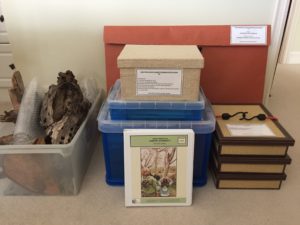
Containers with contents of teaching kit.
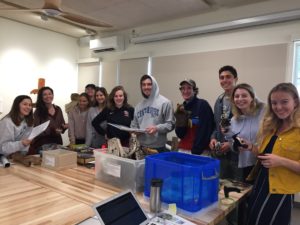
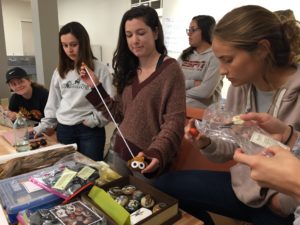
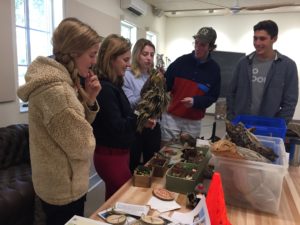 Recently the Department of Environmental Education at Pitzer College in Claremont, California welcomed a little help from the Cavity Conservation Initiative (CCI) in developing a 5th grade level program about the habitat value of dead trees—an often overlooked topic. You see, students in Paul Faulstich’s Theory and Practice in Environmental Education class have an opportunity to do some practice teaching with youngsters who come to their biological field station for nature study. The Bernard Biological Field Station, an 86-acre research property, is maintained in its natural condition where trees are usually allowed to die in place. But what could be more dull to a kid than a dead tree?! Well, hold on!
Recently the Department of Environmental Education at Pitzer College in Claremont, California welcomed a little help from the Cavity Conservation Initiative (CCI) in developing a 5th grade level program about the habitat value of dead trees—an often overlooked topic. You see, students in Paul Faulstich’s Theory and Practice in Environmental Education class have an opportunity to do some practice teaching with youngsters who come to their biological field station for nature study. The Bernard Biological Field Station, an 86-acre research property, is maintained in its natural condition where trees are usually allowed to die in place. But what could be more dull to a kid than a dead tree?! Well, hold on!
How about a teaching kit with various lesson plans for break-out groups, and many fun hands-on resources? Today we delivered just that. Here’s one example of what it will make possible.
First, how about wood samples to teach kids how to “read” a dead tree for signs of wildlife? Let’s set them on the trail with binoculars, clipboards and specific assignments. Some students are investigators and researches, others are journalists and illustrators. Resources like a bird field guide, illustration cards to local plants and animals, magnifying lenses and tape measures are ideal to have along. Teachers are prepared with more than a dozen key questions designed to get kids to make careful observations and to think. Not sure of an answer? How about consulting our field guides or illustration cards? Can we draw a conclusion? What questions still need to be answered? Youngsters are scientists in the making, and they are told so!
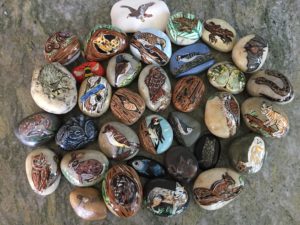
Food-web-building rocks painted by Jo-Ann Coller
In 45 minutes, with the teacher’s prodding, they learn to identify not just what wildlife use dead trees, but other valuable resources in the habitat. They learn how different animals use those resources (and compete for them). Ah, perhaps a light bulb goes on—the more natural resources a habitat has (like both live and dead trees, and downed wood, native plants and sources of water) the more types of wildlife can live there! It offers more for people to enjoy! We hope that’s just the beginning.
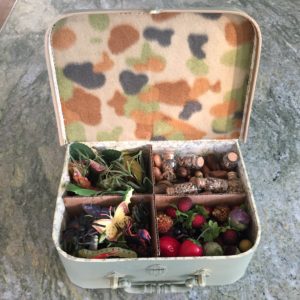
A lunch box for wildlife
Pitzer College student teachers may never see their 5th graders a second time, but we can be hopeful that some of their young learners will be applying new eyes to landscapes in their neighborhood and elsewhere; and who knows what else! Might one of them think of ways to improve the habitat quality of his/her back yard, a community garden or a vacant lot? Might want to learn more?
We wrap up this gratifying occasion with a heartfelt word of appreciation to the generous donors who made it possible for us to donate this kit to Pitzer College. And of course, to Professor Paul Faulstich PhD for his visionary teaching style and for embracing the mission of the CCI.


Connect
Connect with us on the following social media platforms.